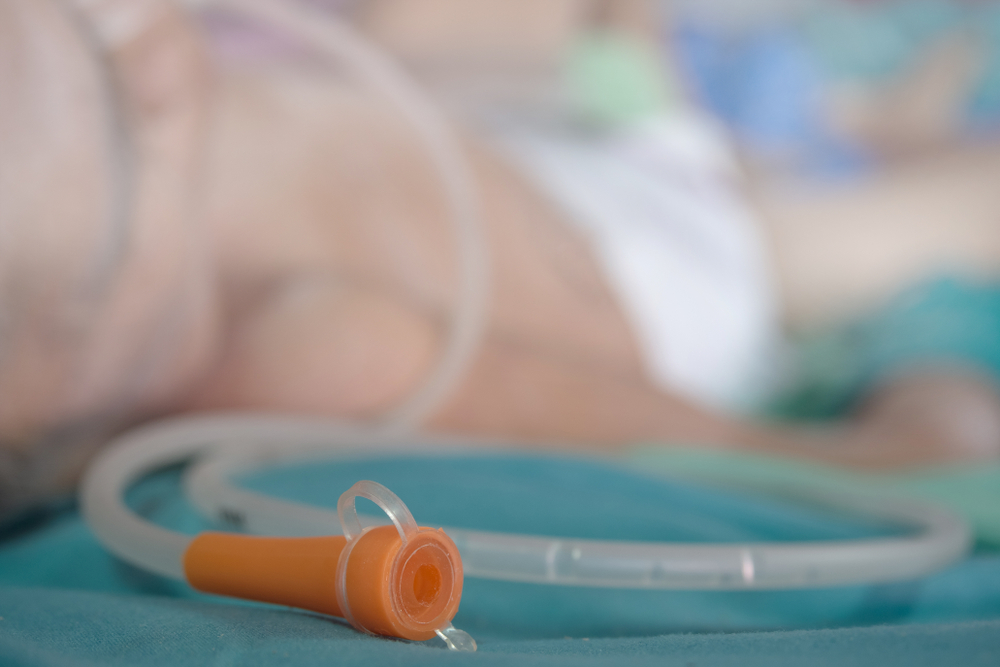Trial shows device tackles major 20-year NHS patient safety issue

New clinical trial suggests that an innovative electronic device could finally tackle incorrect nasogastric tube insertion – a patient safety issue that has plagued the NHS for more than 20 years.
A clinical trial, conducted in NHS hospitals and published in the BMJ Journal, Nutrition, Prevention & Health, suggests that a new electronic device could finally tackle a patient safety issue that has plagued the NHS for more than 20 years.
Every year, nurses place more than a million nasogastric tubes into patients’ stomachs so that they can administer nutrition, hydration and medication. Studies have noted that the procedure has been widely regarded as “ relatively innocuous”, but this is not always the case. Incorrect placement, which occurs in 1-3 per cent of all insertions, can lead to catastrophic outcomes and even death. It is the UK’s fourth most common cause of NHS ‘Never Events’, the term for serious preventable incidents.
After years of challenges, between 2005 and 2016, the NHS made a concerted effort to tackle the issue, publishing five National Patient Safety Alerts – in 2005, 2011, 2012, 2013 and 2016. Yet, while 100 incidents were recorded during the patient safety report period 2011 to 2016, that number has increased by 50 per cent to 150 between 2018 and 2023.
Numerous organisations have been calling for change. The Healthcare Safety Investigations Branch (HSIB) – funded by the Department of Health and Social Care (DHSC) – has previously identified the need for new technologies to tackle the issue and the patient charity, while The British Association for Parenteral and Enteral Nutrition (BAPEN) has said that patient safety must be prioritised.
In 2022, a coroner wrote to the DHSC to express concern that “there is no unified approach to addressing the ongoing issue of avoidable deaths caused by using misplaced nasogastric tubes”.
A chance for progress
Now, a new device could offer the chance for progress. NGPod is an innovative fibre-optic electronic device, developed by UK health start-up, NGPod Global, and a paper published in a BMJ Journal and based on a trial in NHS hospitals, has concluded that it could “transform the process” for checking for the correct placement of nasogastric tubes.
Currently, to check placement of NG tubes, nurses must obtain aspirate (withdraw fluid from the body through the tube) and place it on a pH strip in order to make a judgement based on colour change, causing error in 12-30 per cent of cases and anxiety for 30-50 per cent of clinicians. If they are unable to obtain aspirate (which happens in up to 46 per cent of cases) or are unable to make a judgement, then patients must then go on to X-ray, leading to average delays of 4.5 hours before feed or treatment can be administered. Some 45 per cent of Never Events have occurred due to misinterpreted X -rays.
In contrast, the handheld NGPod device uses a fibre optic sensor that is inserted directly into the stomach via the feeding tube – eliminating the need for aspirate – and sends light signals back to a handheld device that uses an electronic checking process to provide a definitive ‘yes/no’ answer on correct placement. The process takes around two minutes to secure a result.
The clinical trial, conducted on 154 adult patients across three NHS secondary care sites, compared the performance of NGPod against the current pH strip procedure. It found that:
- NGPod eliminates the subjective reading of a pH strip colour change and gives a definitive ‘yes/no’ answer – improving patient safety and reducing clinician anxiety.
- NGPod reduces the need for patients to go to X-ray by 61 per cent – significantly reducing time delays for treatment and risks associated with misinterpretation.
- NGPod has the potential to reduce Never Events associated with nasogastric tube misplacement.
Commenting on the findings, Tracy Earley, the consultant nutrition nurse at Royal Preston Hospital who led the clinical study, said: “There have and continue to be nasogastric tube never events in hospitals in England when the use of misplaced nasogastric tubes have contributed to severe illness or even death. A number of NHS and clinician group reports have highlighted the need for a more reliable first-line method of nasogastric tube confirmation to replace the current procedure of testing gastric aspirate with pH universal indicator paper.
“The results from this study demonstrate that the adoption of NGPod could transform nasogastric tube placement checks, providing a quick and reliable response to help clinicians decide whether it’s safe for the patient to feed or not.”
John Carrington, CEO of NGPod, which produces all of its devices in Cheshire, said: “NGPod is already making a positive difference in ten NHS hospitals and this latest study serves to demonstrate the transformative impact it could have, if introduced at scale, in tackling a longstanding and increasingly common patient safety issue in hospitals across the UK.
“Not only is NGPod quick and easy to use, but the results also show that it’s a far more reliable method of confirming the placement of nasogastric tubes, eliminating the anxiety and stress that up to half of all clinicians currently experience when checking the placement of nasogastric tubes.
“What’s more, a cost-analysis has shown that NGPod lowers the cost of healthcare when compared with current methods – meaning it’s not only more effective and better for patients, but it’s also more cost-effective at a time when cost pressures on the NHS have never been greater.”
